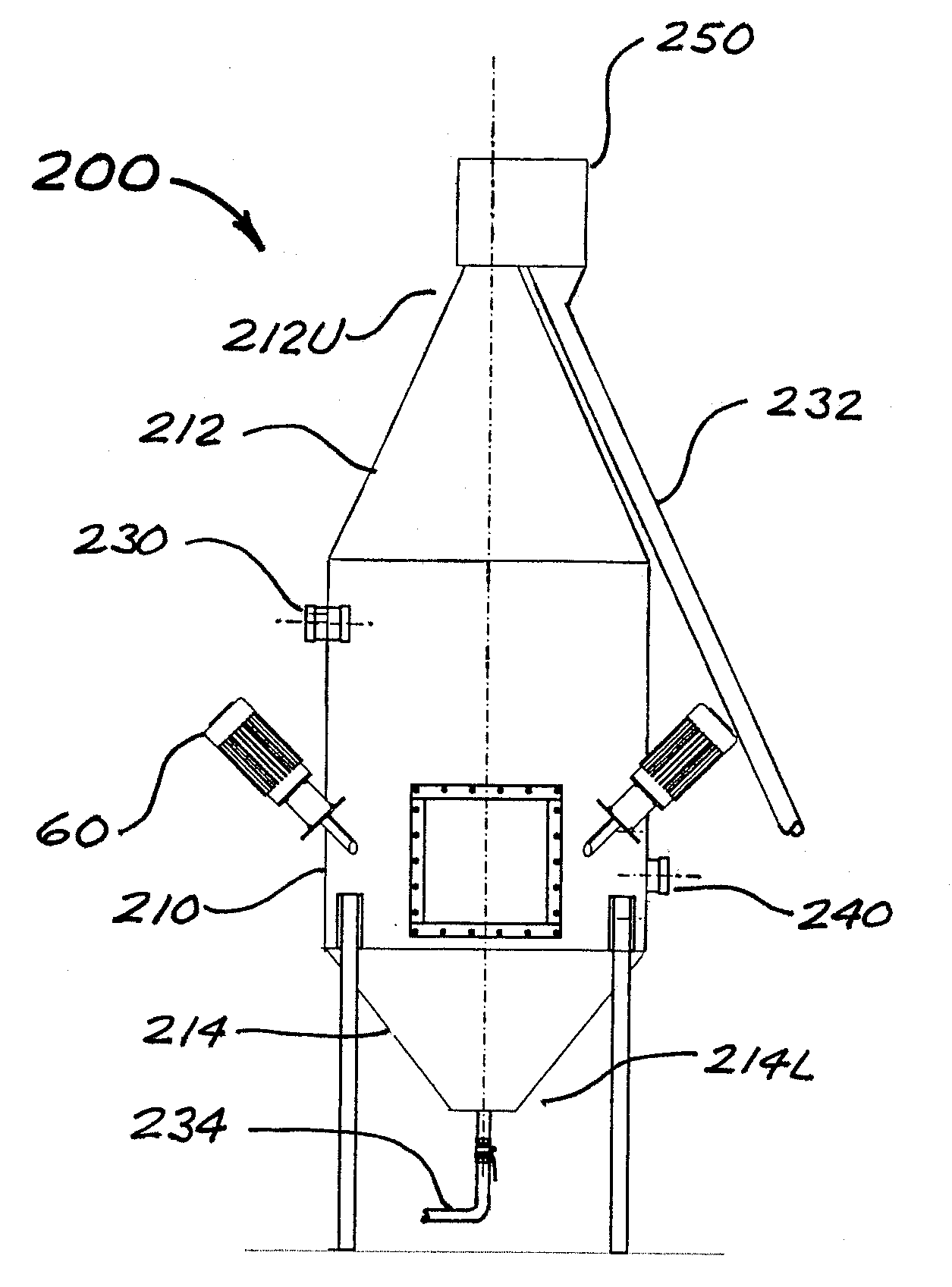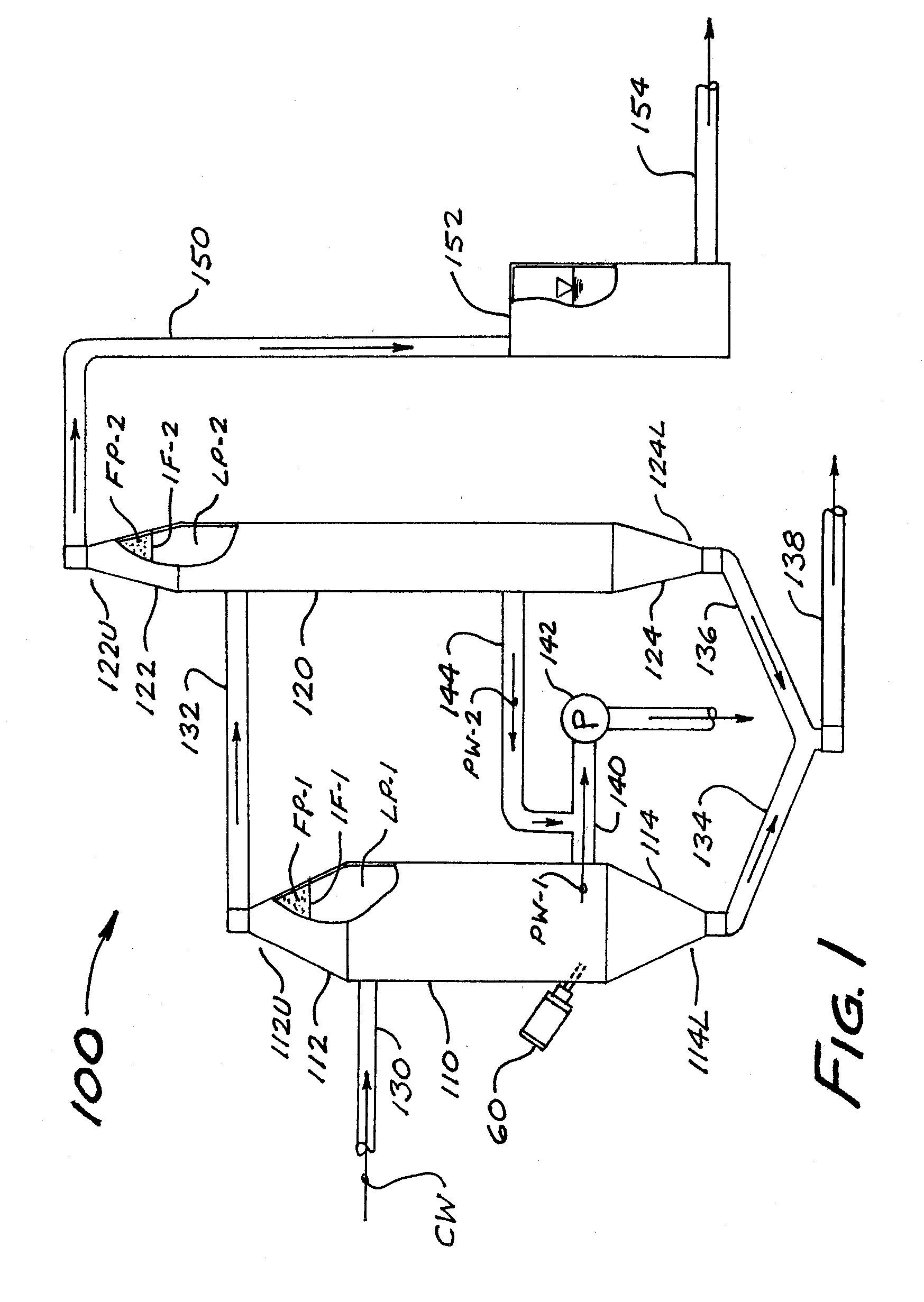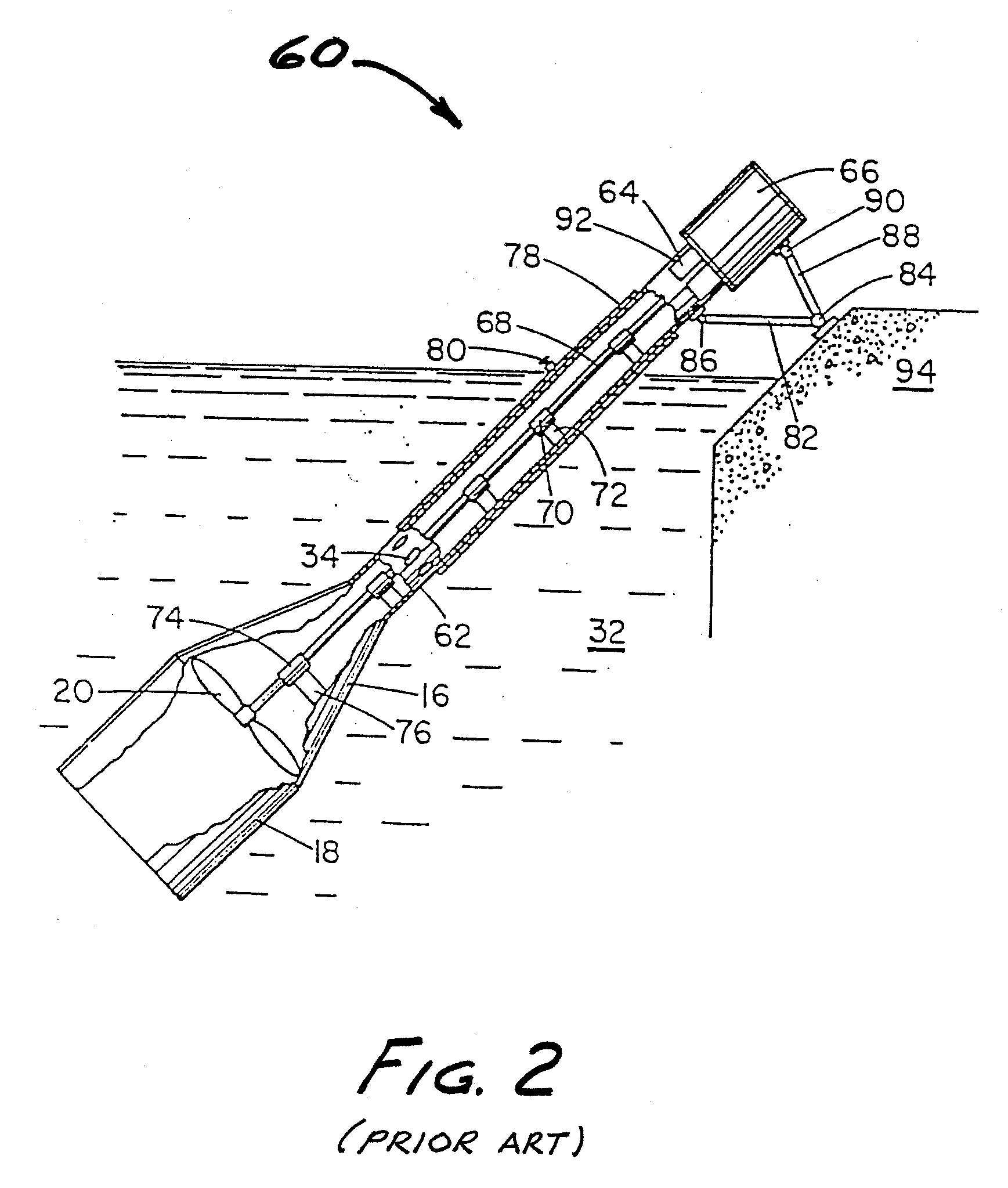Process and apparatus for separating hydrocarbons from produced water
a technology of hydrocarbons and equipment, applied in the direction of flotation, solid separation, water/sludge/sewage treatment, etc., can solve the problems of optimally small bubbles or optimal bubble distribution, and achieve the effect of minimizing the size of the oil-water interface, maximizing the effectiveness of the bubble in removing contaminants, and optimizing uniformity
- Summary
- Abstract
- Description
- Claims
- Application Information
AI Technical Summary
Benefits of technology
Problems solved by technology
Method used
Image
Examples
Embodiment Construction
[0026]The process of the present invention may be understood with reference to FIG. 1, which is a schematic depiction of a first embodiment 100 of the apparatus of the invention. Apparatus 100 includes a generally cylindrical and vertically-oriented gas induction tank, referred to herein as primary separation tank 110. Primary tank 110 includes a preferably conical upper section 112 (having an upper end 112U) and a preferably conical lower section 114 (having a lower end 114L). Apparatus 100 further includes a generally cylindrical and vertically-oriented secondary separation tank 120 having a preferably conical upper section 122 (with upper end 122U) and a preferably conical lower section 124 (with lower end 124L). A feed water inlet conduit 130 (preferably but not necessarily in the form of a rigid pipeline) is in fluid communication with a preferably medial or upper region of the cylindrical main portion of primary tank 110, for purposes of introducing process water into the inte...
PUM
| Property | Measurement | Unit |
|---|---|---|
| diameter | aaaaa | aaaaa |
| diameters | aaaaa | aaaaa |
| diameters | aaaaa | aaaaa |
Abstract
Description
Claims
Application Information
 Login to View More
Login to View More - R&D
- Intellectual Property
- Life Sciences
- Materials
- Tech Scout
- Unparalleled Data Quality
- Higher Quality Content
- 60% Fewer Hallucinations
Browse by: Latest US Patents, China's latest patents, Technical Efficacy Thesaurus, Application Domain, Technology Topic, Popular Technical Reports.
© 2025 PatSnap. All rights reserved.Legal|Privacy policy|Modern Slavery Act Transparency Statement|Sitemap|About US| Contact US: help@patsnap.com



